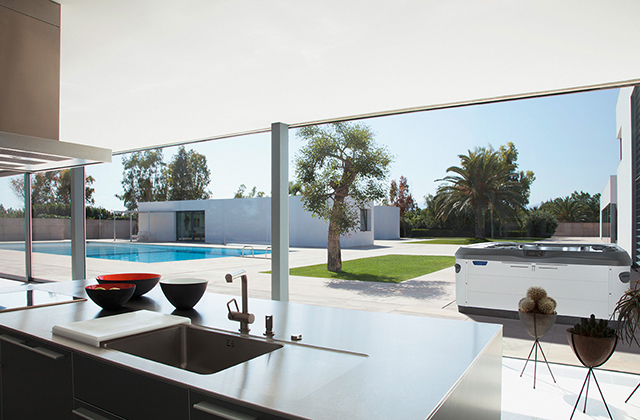First time swimming pool owners anxiously anticipate having their own personal backyard oasis where they can cool off and relax on a hot summer day, I bet they will contact for a pool removal Sydney. It can be a great feeling to watch the family enjoy the pool throughout the summer and to host summer pool parties where the family and friends can not only enjoy your superior barbecuing skills, but the crystal clear pool as well. But when the pool stops looking so crystal clear and starts looking more like a pond in the local nature area, the fun can quickly become a big headache. Following are 5 tips that will help ensure your swimming pool remains crystal clear throughout the year.
1 – Circulation – we’ve all heard the term Location, Location, Location with regard to owning real estate. Well, with a swimming pool it’s Circulation, Circulation, Circulation! Without adequate circulation it will be difficult to ever have a pool that stays nice, let alone one that people want to swim in. And when the summer heat comes, the green monster will quickly make its appearance. So the first step to an easy pool is making sure the main pool pump is in good working order.
2 – Filtration – just as important as circulation is filtration. It’s a real simple concept, since the pool filter removes the dirt from the pool, without sufficient filtration the pool will remain dirty. Whether the main pool filter is sand, cartridge, or diatomaceous earth, it needs to be maintained on a routine schedule and never neglected in order for the pool water to stay clean.
3 – Filter Run Time – one issue that often gets neglected is the length of time required for sufficient filtration. Of course it can be different for every pool depending on the climate and the surrounding environment of the pool. But there is one sure thing, without the proper amount of filtration, the pool will not look good. As a general concept, when the hot summer months approach, it is important to increase filtration time. So if the pool doesn’t look good, check to make sure the run time for the main pool filter is adequate for that season and climate. If you are not sure how long to run your filter for your specific climate, call the local pool store and they should be able to help out.
4 – Balanced Water – okay so you now have good circulation, a well maintained filter, and adequate run time for the filter. The fourth key is balanced pool water chemistry. For many people, it’s a little scary to dive into the arena of being a chemist, but it really isn’t as difficult as one might think. Like anything else, once you have it figured out it’s real easy. But it is a crucial factor to a healthy swimming pool and in the long run, having properly balanced pool water can save hundreds to thousands of dollars in the form of otherwise avoidable pool problems and chemical expenses. Once this skill is mastered, it really shouldn’t take more than 5 – 10 minutes a week. So invest in a good test kit, and with a lot of practice you will quickly become an expert in balancing pool water. If balancing the pool water is something you just aren’t willing to jump into or you just don’t care to worry about it, hire a professional pool service to manage the chemicals for you.
5 – Cleaning the Pool – probably disliked the most is the seemingly tedious task of keeping the swimming pool free of debris. But for a majority of cases, this task shouldn’t take more than 10 – 15 minutes a week. Most swimming pools now have automatic pool cleaners that do half the work. Simply follow a quick routine every day or every other day of emptying the skimmer basket, pump basket, and pool cleaner bag in order to avoid any clogs that will stop water circulation. Then, once a week, perform a quick test to make sure all the equipment is in good working order, the water is balanced, check the water level, skim any large debris from the top or bottom of the pool, and brush the steps and walls of the pool.
There you have it, 5 tips on keeping your swimming pool looking great all year long. Probably just as important as all of these tips is simply getting to know your pool. Keep written records of the pool water testing results, any adjustments made, when the filter was clean, and when any equipment repairs were made. As time goes on, you will gain a good understanding of your pool’s unique personality, how it will act throughout the different seasons, and what it requires to be happy. And remember, if the pool is happy, you are happy!
David Franics has been a professional in the swimming pool service industry in Northern California since 2002. He has serviced hundreds of different residential swimming pools and writes articles about his swimming pool maintenance experience in order to help do-it-yourself pool owners tackle the many different problems that go along with owning a swimming pool. Visit the website to view more articles on swimming pool care.
Article Source: http://EzineArticles.com/expert/Dave_Franics/568211
Article Source: http://EzineArticles.com/3830258


